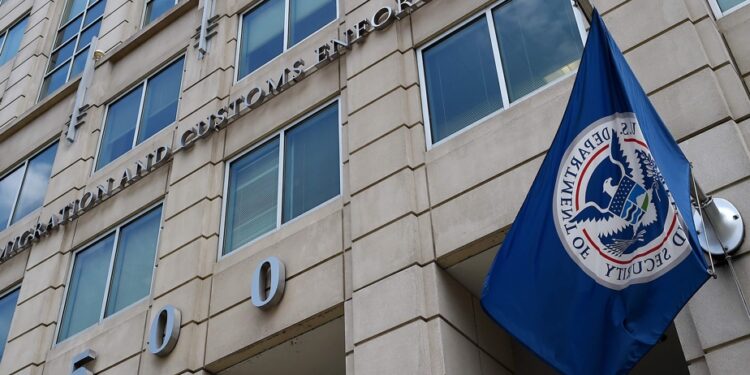A federal judge has temporarily blocked a new Trump administration policy aimed at maintaining migrant children in detention after their 18 years, intervening quickly to stop transfers to adult establishments scheduled for this weekend, according to defenders of migrants’ rights.
US District Judge Rudolph Courseras published a temporary restrictive order on Saturday against the United States Immigration and Customs Service (ICE) prohibiting the detention of children who have arrived alone and without authorization in the ICE adult detention centers after their majority.
Washington DC judge said such an automatic detention violated a justice order he had made in 2021 prohibiting such practices.
The ICE and the Department of Internal Security of the United States did not immediately respond to emails requesting comments.
The pressure exerted to place new adults in detention is a new battle on one of the most sensitive points of the radical immigration program of President Donald Trump: the treatment of children crossing the border without being accompanied by adults.
The Associated Press reported on Friday that the authorities offered US $ 2,500 to migrant children aged 14 and over so that they voluntarily return to their country of origin. Last month, another federal judge blocked the attempts to expulsion from the Guatemah migrants who arrived alone in the United States. Some children had been embarked on planes during this night operation before the judge blocks it.
“All of this is part of the same general policy aimed at constraining young immigrants to give up their right to request the protection of the United States,” said Michelle Lapointe, lawyer for the US immigration council, one of the groups who asked the Courseras to intervene in a request filed shortly after midnight on Saturday.
Unaccompanied children are placed in shelters managed by the refugee resettlement office, under the responsibility not of the ICE, but of the US Ministry of Health and Social Services.
The judge’s 2021 ordinance ordered the federal authorities to release minors aged 18 from these shelters to “the least restrictive environment”. He ruled that this is what the federal law requires, as long as the minor does not represent a danger for himself or for others and is not likely to flee. Minors are often entrusted to the care of a loved one, or even placed with foster family.
Sustainable risk of damage
The lawyers who represent unaccompanied minors have however learned in recent days that the ICE informed the shelters that children about to be 18 years old-even those whose release plan was already approved-could no longer be released and would rather be placed in a detention center, perhaps on Saturday.
An ICE email affirmed that new adults could only be released by the ICE in the context of its power of parole on a case -by -case basis, for “urgent humanitarian reasons” or “important public interest”. From March to September, the ICE granted parole for less than 500 people in total.
The complainants argued that “parole is almost dead letter” and that children who have exceeded the age limit in refuge would undergo lasting damage due to “unnecessary and inappropriate adult detention” in potentially overcrowded prisons or located in isolated places.
The American border authorities have arrested more than 400,000 children crossing the border without their parents since October 2021. A 2008 law forced them to appear before an immigration judge before being sent back to their country.
Children spend more time in public shelters since the Trump administration submitted them to closer surveillance before putting them back to their families in the United States so that they can continue their immigration file.
This additional monitoring includes fingerprints, DNA tests and home visits by immigration agents. During the summer, immigration agents began to intervene and arrest parents.
The average length of stay in public shelters for people freed to the United States was 171 days in July, against a peak of 217 days in April, but much higher than the 37 days of January, the year of the coming to power of Donald Trump.



